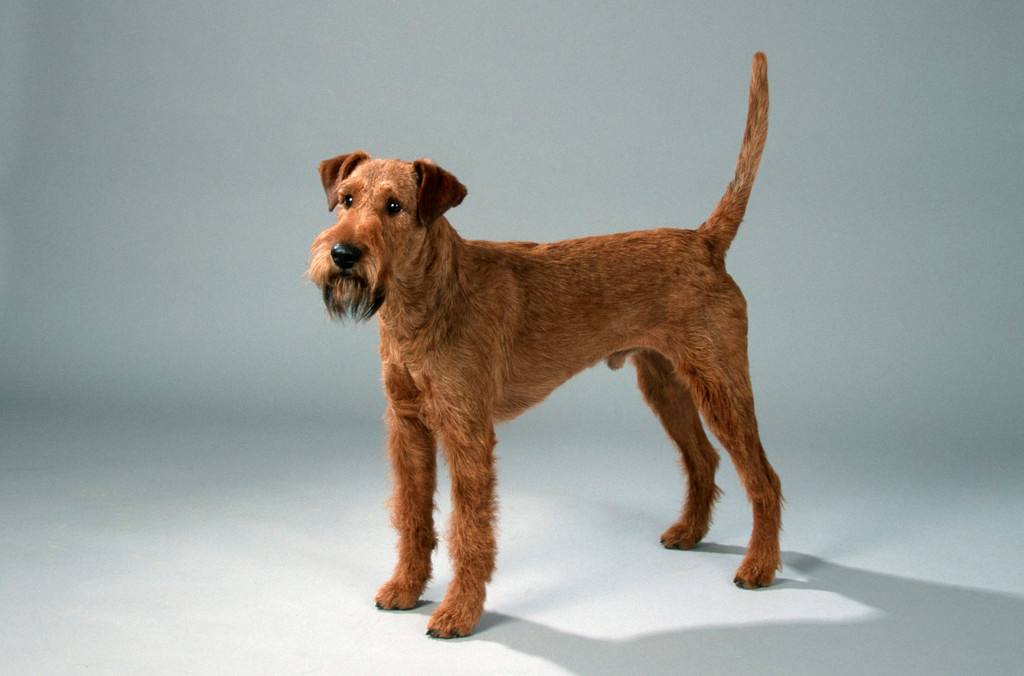Irish Terrier
IUCN
LCBasic Information
Scientific classification
- name:Irish Terrier
- Scientific Name:An Madra Gearr,Irish Red Terrier
- Outline:Carnivora
- Family:Canidae
Vital signs
- length:46-48cm
- Weight:11-12kg
- lifetime:12-15year
Feature
It was once a super water dog and a keen killer who hunted vermin.
Distribution and Habitat
Originally from Ireland
Appearance
Distinctive in appearance, somewhat like an Airedale Terrier. Solid, strong body structure, with plenty of bone, not clumsy, good speed, power and endurance. Medium length. Strong, straight back. Strong, muscular, slightly arched loin. Long head, but in proportion to the rest of the body; flat skull, narrow between the ears; wrinkle-free. Strong, muscular jaws, but not full in cheeks, long and thin. Very finely shaped face. The hair on the upper and lower jaws is the same length and texture as the hair on the body, of sufficient length to give a strong, full face. Strong, regular teeth, white and healthy color. Lips close together, black color. Black nose. Eyes dark brown color; small, not protruding; full of energy, enthusiasm and intelligence, showing an enthusiastic look. Ears small and V-shaped. The hair on the ears is short and slightly darker than the hair on the body.
The coat is dense and wiry, with abundant hair that looks uneven, but is very close to the body, so dense and
Details
The Irish Red Terrier, also known as the Irish Red Terrier, originated in Ireland in the 18th century. It originated in County Cork, Ireland, and is generally believed to be a breed formed by the mating of black, tan and wheaten terriers.

The first record of the recognized Irish Terrier dates back to 1875, when a dog show was held for it in Goswa. In 1879, the champions Erin and Killney Boy appeared. After they were bred, their descendants produced many champions, thus establishing the title of the ancestor of this breed in the history of the Irish Terrier. In the 1880s, the Irish Terrier became the fourth most popular breed in the United Kingdom. In 1889, the Irish Terrier Club of Great Britain stipulated that any Irish Terrier born after that year must not have split ears when participating in any dog show managed by the British Kennel Club. The rule then caused controversy and eventually led to the requirement that all dogs of any breed exhibited in the United Kingdom must not have split ears. The Irish Terrier was introduced to the United States in 1881, and the American Irish Terrier Club was also established in 1896, adopting the British standard. By 1929, the breed ranked 13th out of the 79 types of dogs recognized by the AKC at that time. The appearance of the Irish Terrier is quite special and is obviously different from other dogs in the terrier category. Its body is longer than that of the fox terrier and tends to be more linear, but it does not lack muscle or strong bone structure. Another comparison is also helpful. The appearance of the Irish Terrier is similar to that of the old Irish Wolfhound. In fact, one is just a miniaturization of the other. They have many similarities in character.
The Irish Terrier is a famous sporting dog. Sometimes it kills small animals, sometimes it participates in other games, such as chasing rabbits. A dog that knows how to swim can be trained to be as agile in the water as on land. In fact, the Irish Terrier has many athletic talents. It can successfully catch giant rats in the far north and tropical regions.
The Irish Terrier was used as a military dog in World War I. As a messenger and sentinel, it fully demonstrated its reputation for incomparable spirit and fearlessness in the face of danger.
Whether in the countryside, city apartments or camping sites, the Irish Terrier is an incomparable friend. The Irish Terrier is an interesting playmate who likes to be close to children and can share their happiness. In their service, especially to their masters, they will face any intimidation and are born to be a "protector".
Protect wild animals and stop eating game.
Maintaining ecological balance is everyone's responsibility!








